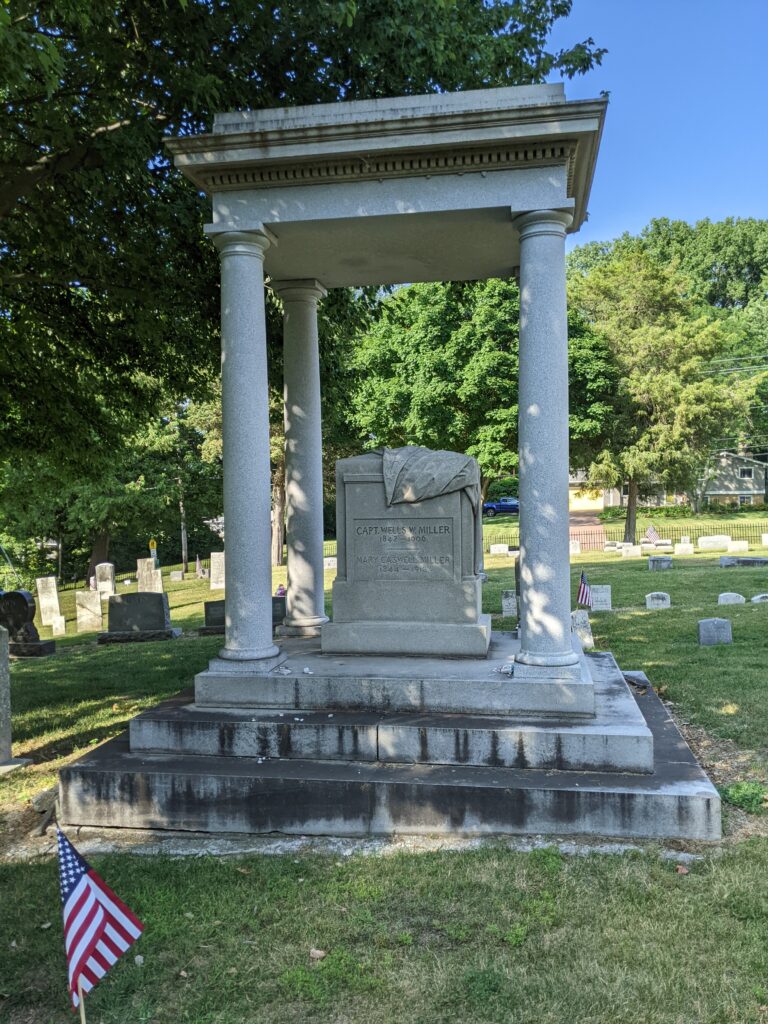
On July 3, 1863 in Gettysburg, Pennsylvania, the U.S. (Union) and Confederate forces clashed, horrific fighting that served as the culmination of a three-day battle that many historians consider a turning point in the Civil War. In the the heat of the fierceness? Captain Wells Waite Miller.

Slaughter at Gettysburg
Nearly one in three men at Gettysburg suffered wounds or died in the fighting. More specifically:
- The United States forces lost 28 percent of their soldiers who were at Gettysburg while the Confederates lost more than 37 percent.
- Fatalities included 3,155 Union men and 3,903 Confederates.
- As far as injuries, 14,529 Union men suffered wounds and 18,735 in the Confederacy.
- Men also went missing: 5,365 in the Union and 5,425 in the Confederacy.
Numbers of the badly injured included Miller who, after being dangerously wounded, laid helplessly on the blood-soaked ground where enemy soldiers came so close that he expected to be trampled to death by their horses.
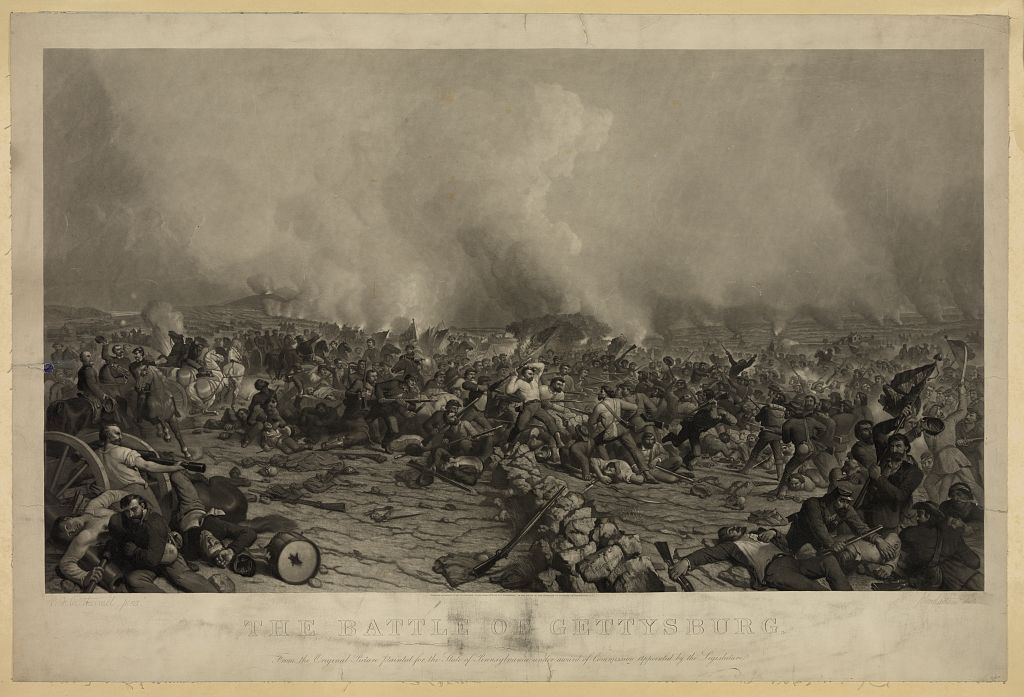
Wells Waite Miller Heads Home
On the home front, loved ones were hearing terrifying stories about the battle, feeling anxious for news about friends and family members who may have been involved in the fighting. Wells’ family didn’t need to wait long, though, because he was quickly transported home—quickly, at least, in comparison with many others in that time and place. A July 11, 1863 report from the Cleveland Daily Leader noted, “We are without any of the details which Captain Miller could doubtless give. He was suffering quite severely from the effects of his wound, but we trust, now he is at home, he will speedily recover.”
Although Wells was luckier than many, recovery was not quick. He stayed at Calvin Caswell’s house in Castalia, applying for sick leave from military service, which was granted because he was now “unfit for duty.”
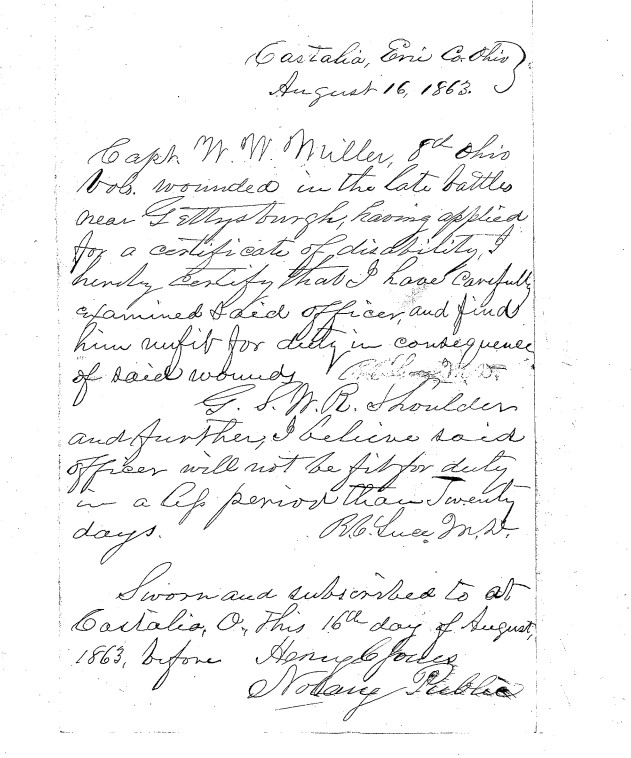
In other words, this once strong young man was now an “invalid.”
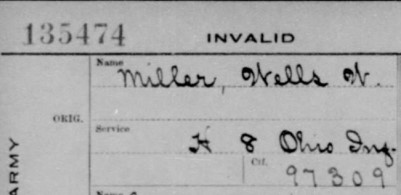
On January 1, 1864, he was sent to General Hospital in Annapolis, Maryland—the town where he’d been a prisoner of war—for an exam. That medical report stated that he should “remain in hospital” for “simple nursing.”
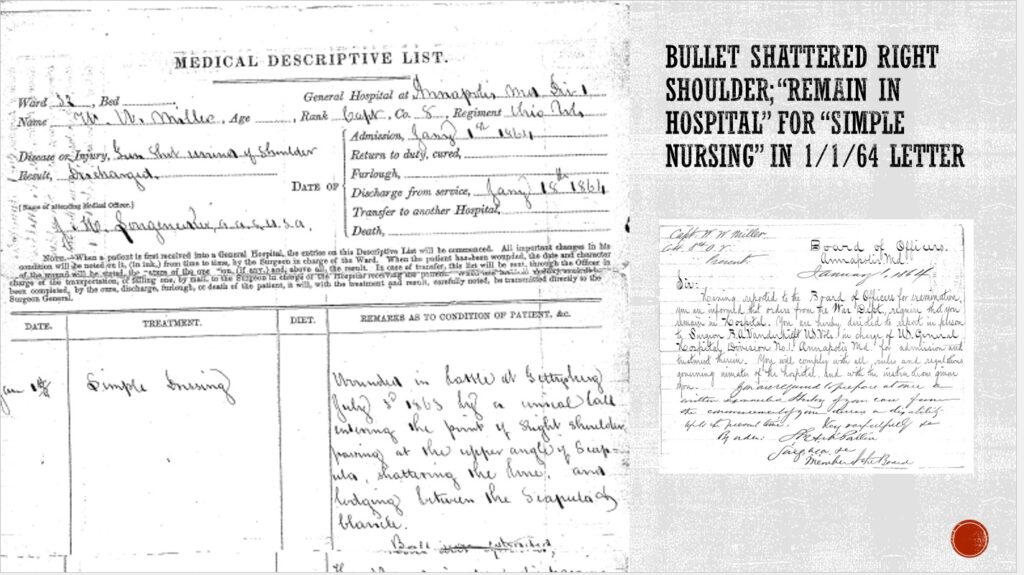
The bullet that lodged along his scapula on his right shoulder had shattered the bone.
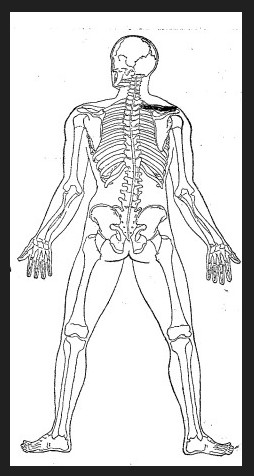
Additional Wounds of War
Plus, as he had lain on the ground while the fierce fighting continued at Pickett’s Charge, his hearing and, to a degree, his eyesight had been significantly damaged—although that was not the issue discussed in January 1864. In fact, he debated those issues with the pension board for decades.
After the exam, he was honorably discharged on January 8, 1864, unable to return to military duty. The reason: “on account of physical disability from wounds received in action with condition that he shall receive no final payment until he satisfied the Pay Department that he is not indebted to the Government.”
Fortunately, there is also happiness to share. On July 4, 1864—just a year and one day after his near-fatal injury—Wells married his sweetheart, Mary Helen Caswell.

The couple had nearly forty-two years of married life together with Wells living for nearly forty-three years after his near-fatal battle wounds.
Wells Waite Miller: Exploration of His Life and Times
I’d like to share my research about Wells Waite Miller from Castalia, Ohio with you. Although I’ve written the material in the order in which I’ve found research material, I now roughly have the posts in the order in which the events occurred.
Blog posts I’ve written on the subject so far include:
- Wells Waite Miller’s America
- Thomas Miller: Ancestors in England
- Great Puritan Migration
- Scandal in the Colonies
- Calm in the Eye of the Storm
- Aaron Miller: Born Under the Drumbeats of War
- Grandparents, Parents, and Siblings
- Enfield, New York
- Ohio Bound
- Oberlin Years: Fierce Debates About Abolitionism
- Enlisting in the Civil War
- A Look at Lodowick G. Miller
- Captured: Camp Parole
- Marching Towards Gettysburg
- Picketts Charge and 43 Bonus Years (current post)
- Glory Days to Invalid Corps
- Castalia Massacre
- Calvin Caswell
- Calvin Caswell, Continued
- Obed Caswell And Walter Caswell: Story of Brothers
- Miller Family Mystery Solved?
- Miller Family Mystery Solved, Part Two
- Amos and Corinne Miller
- Oscar Schultz Kriebel, Part One
- Oscar Schultz Kriebel, Part Two
- Oscar Schultz Kriebel, Part Three
- Oscar Schultz Kriebel, Part Four
- Erie County, Ohio for Congress
- Wells Waite Miller: Republic Candidate for Ohio Governor
- Ohio Antietam Battlefield Commission
- “Speaking the Names: A Tale of Two Brothers” at Ashland University’s Black Fork Review
I invite you to become part of this journey, sharing my posts with people who enjoy reading historical biographies.
If you read this material and have additional information that’s directly tied to Miller or sets context about his life—or you’ve spotted errors—please email me at kbsagert@aol.com.